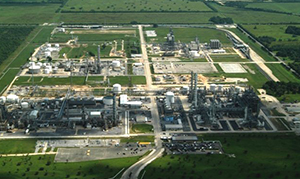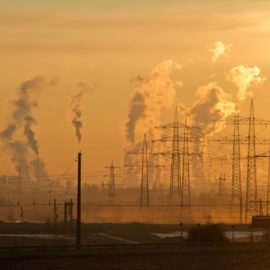
With Louisiana ranking the the bottom or near by is an embarrassment I wish the state would look at fixing. But we just became a national comment for those wanting stronger rules at petrochemical plants.
A new report points to a chemical explosion in Louisiana this year as a prime example of why the federal government should toughen national safety standards at petrochemical plants. The Jan. 26 blast that injured six workers at Westlake Corp.’s Lake Charles South complex and forced thousands of students to shelter at their schools was one of three chemical incidents highlighted in the report, produced by Coming Clean and the Environmental Justice Health Alliance for Chemical Policy Reform. The two environmental groups are pushing the U.S. Environmental Protection Agency to enact proposed revisions to the Risk Management Program, which regulates about 12,000 facilities that store large amounts of hazardous chemicals near populated areas. While the program is supposed to prevent disasters, the groups note that an average of 140 harmful chemical incidents happen in the U.S. each year.
nola.com
EPA’s proposed rules do not go far enough nor should the industry be trusted to voluntarily monitor themselves.
The EPA’s proposed rules “do not go nearly far enough, and trust (Risk Management Program) facilities with an egregious safety record – like Westlake Chemical South – to voluntarily improve,” says the report, which was released Tuesday. Westlake declined to comment for this story. The Houston-based company has a long track record of chemical spills, fires, explosions and failed safety inspections at its four large plants in the Lake Charles area, a Times-Picayune | New Orleans Advocate review of government records found in March. Despite repeated promises to improve safety standards and equipment, two of Westlake’s most dangerous incidents happened over the past year. The January explosion at Lake Charles South was almost identical to one that occurred last September at Westlake Petrochemical, a plant about five miles away. Broken bones, burns and ear damage were among the injuries suffered by at least 23 workers during the Sept. 27 blast. Westlake’s facilities have the potential to produce much bigger disasters – ones that could imperil tens of thousands of people. A hurricane or other disaster could cause Lake Charles South to release enough toxic gas to imperil more than 210,000 people, according to company estimates in a “risk management plan” the newspaper viewed via a Freedom of Information Act request.
The EPA has proposed Risk Management rules for greater protection of the neighborhoods near by.
Last month, the EPA proposed a slate of Risk Management Program improvements the agency says would offer greater protections to communities near plants. The new rules would emphasize the need for plants to evaluate risks from climate change and natural hazards, including hurricanes, floods and tornados. The EPA also plans to improve public access to chemical plant information, boost emergency preparedness at plants, and require safer technologies and third-party audits at facilities with high accident rates. But the rules rely too much on voluntary actions, according to the two groups, which represent a network of environmental health and justice organizations. “This approach has failed to prevent many chemical disasters over the last 25 years,” the report says. “If the draft rule is not strengthened, facility workers and neighbors across the country will continue to bear the human, environmental, and financial costs of more preventable disasters.”
The report also cited problems at other Westlake plants not in this state.
The report highlights two other chemical plant incidents that occurred within weeks of the Westlake explosion. In Passaic, New Jersey, a large fire broke out at a furniture warehouse and spread to the neighboring Qualco chemical plant, which housed a large quantity of chlorine. About 200 firefighters fought the blaze for three days and prevented the plant’s largest chemical stores from igniting. The third incident was a fertilizer plant fire in Winston-Salem, North Carolina that released toxic gasses and spurred local officials to call for the evacuation of nearly 7,000 residents. The report urges the EPA to consider offsite risks to plants, including fires at neighboring buildings, and the expansion of disaster prevention requirements to a wider array of chemicals, including ammonium nitrate, which was a source of the North Carolina fire and several industrial explosions, including one that killed at least 220 people near a fertilizer warehouse in Lebanon in 2020. The Westlake explosion in January shook nearby buildings and sent a dark mushroom-shaped cloud over Lake Charles. About 7,000 students in more than a dozen schools in the communities of Westlake and Sulphur took shelter to prevent exposure to toxic gases. Five workers sought treatment at a nearby hospital for lung, head, neck and back injuries.
Westlake has said they will spend money to upgrade their plants but can they be trusted with their record?
In a settlement with the EPA in June, Westlake agreed to spend $110 million on plant upgrades at two of its Lake Charles-area facilities and one in Calvert City, Kentucky. The EPA said the improvements will greatly reduce air pollution in the Lake Charles area. The company also agreed to $1 million in civil penalties as part of the settlement.
We rank low where we should be higher but we rank high in ways we should not be happy with.



